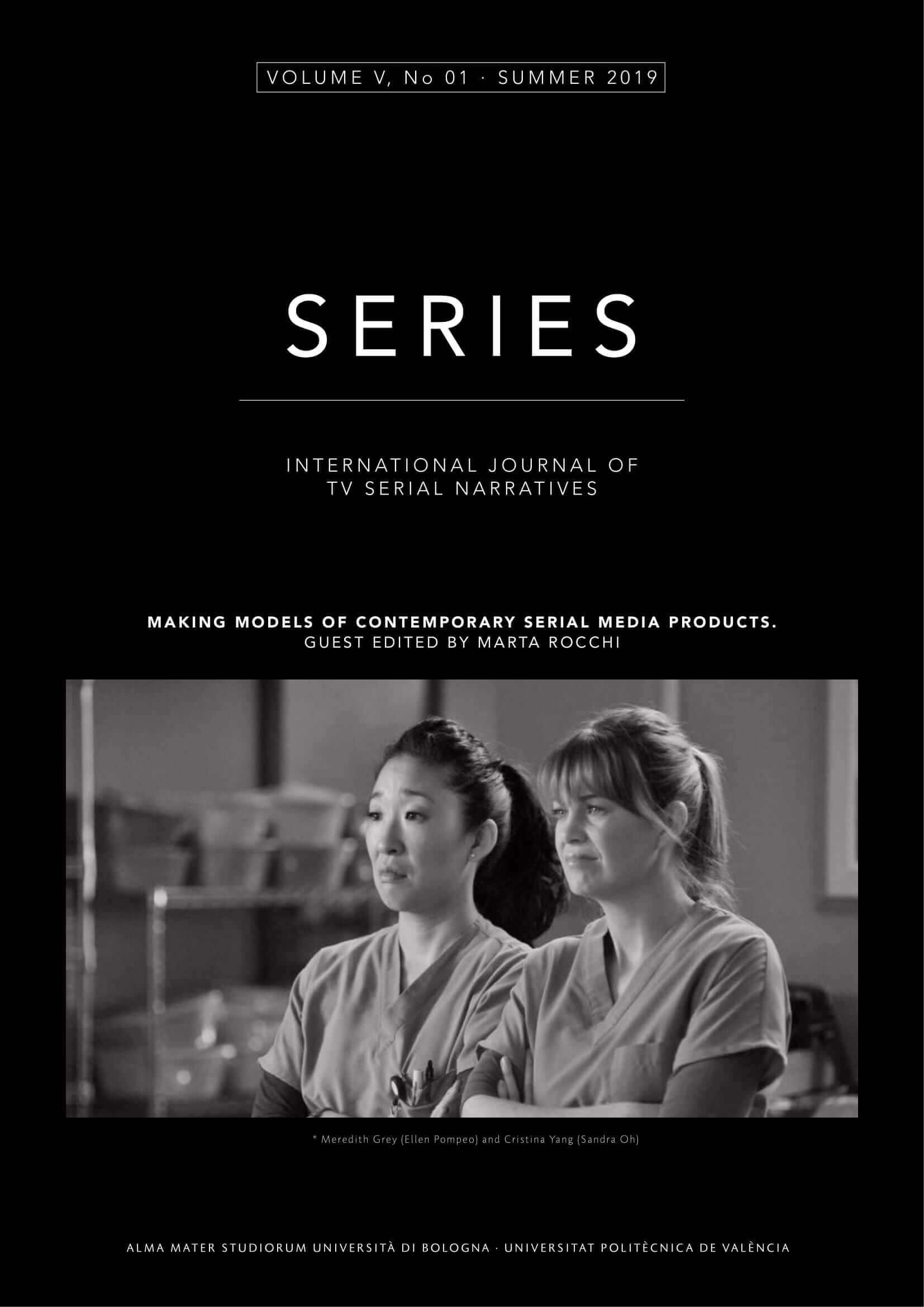‘I’ve been nowhere and done nothing’. The characterization of Daisy Mason in the British drama Downton Abbey
DOI:
https://doi.org/10.6092/issn.2421-454X/8966Keywords:
characterization, television series, Downton Abbey, corpus linguistics, identity, languageAbstract
The article aims at investigating the characterization of Daisy Mason in the British television drama Downton Abbey and is based on a corpus of transcripts of episodes in Series One, Two and Three. The relevant background of the study is represented by Culpeper’s (2001) and Bednarek’s studies on characterization in drama and fictional television (Bednarek 2010, 2011a, 2011b, 2011c, 2012).
Drawing upon a combined methodology, in line with the Corpus Assisted Discourse Studies tradition (Partington, Duguid and Taylor 2013), the analysis puts in relation the most relevant aspects of the personality of Daisy – the character traits obtained by applying Culpeper’s (2001) framework on textual cues – with typical features of her speech revealed by corpus linguistics methodologies.
Corpus evidence shows a relevant presence of negatives in Daisy’s speech: I don’t know is the most frequent three-word cluster around the pronoun I. Her sentences are shorter than the average of other characters and are often self-interrupted. Moreover, she asks a question every fourth sentence, while the average of other characters is one every fifth.
Results point to a frustrated character, a silent rebellious who has difficulties in expressing her thoughts and does not accept to play a minor role in the story.
References
Baena, Rosalía and Chrysta Byker (2015). “Dialects of nostalgia: Downton Abbey and English identity.” National Identities 17(2), 259-69. https://doi.org/10.1080/14608944.2014.942262.
Bednarek, Monika (2010). The Language of Fictional Television: Drama and Identity. London/New York: Continuum. https://doi.org/10.1075/etc.4.2.08col.
Bednarek, Monika (2011a). “The language of fictional television: A case study of the ‘dramedy’ Gilmore Girls”. English Text Construction, 4 (1). 54–83. https://doi.org/10.1075/etc.4.1.04bed.
Bednarek, Monika (2011b). “The stability of the televisual character: A corpus stylistic case study”. In Telecinematic Discourse: Approaches to the Language of Films and Television Series, edited by Roberta Piazza, Fabio Rossi and Monika Bednarek, 185–204. Amsterdam/Philadelphia: John Benjamins. https://doi.org/10.1075/pbns.211.13bed.
Bednarek, Monika (2011c). “Expressivity and televisual characterization”. Language and Literature, 20 (1). 3–21. https://doi.org/10.1177/0963947010386884
Bednarek, Monika (2012a). “Constructing 'nerdiness': Characterization in The Big Bang Theory”. Multilingua 31(2). 199–229. https://doi.org/10.1515/multi-2012-0010
Bednarek, Monika (2012b). “‘Get us the hell out of here’. Key words and trigrams in fictional television series”. International Journal of Corpus Linguistics, 17.1: 35-63. https://doi.org/10.1075/ijcl.17.1.02bed
Chiaro, Delia (2000). “The British will use tag questions, won’t they? The case of Four Weddings and a Funeral”. In Tradurre il Cinema, edited by Cristopher Taylor, 27-39. Trieste: Università degli Studi di Trieste.
Culpeper, Jonathan (2001). Language and characterization: people in plays and other texts. London: Longman. https://doi.org/10.4324/9781315839349
Durham, Kim (2002). “Methodology and praxis of the actor within the television production process: facing the camera in EastEnders and Morse”. Studies in Theatre and Performance, 22(2), 82-94. https://doi.org/10.1386/stap.22.2.82
Fellowes, Julian (2012). Downton Abbey. The complete scripts. Season One. New York: Harper Collins.
Fellowes, Julian (2013). Downton Abbey. The complete scripts. Season Two. New York: Harper Collins.
Fellowes, Julian (2014). Downton Abbey. The complete scripts. Season Three. New York: Harper Collins.
Fischer-Starcke, Bettina (2006). “The phraseology of Jane Austen’s Persuasion: Phraseological units as carriers of meaning”. ICAME Journal, 30. 87–104.
Fischer-Starcke, Bettina (2009). “Keywords and frequent phrases of Jane Austen’s Pride and Prejudice. A corpus-stylistic analysis”. International Journal of Corpus Linguistics 14 (4). 492–523. https://doi.org/10.1075/ijcl.14.4.03fis
Gabrielatos, Costas (2018). “Keyness analysis: nature, metrics and techniques”. In Corpus Approaches to Discourse: a critical review, edited by Charlotte Taylor and Anna Marchi, 225-258. Oxford: Routledge. https://doi.org/10.4324/9781315179346
Leech, Geoffrey and Mick Short (2007). Style in Fiction: A Linguistic Introduction to English Fictional Prose. Edimburgh: Pearson Education. https://doi.org/10.2307/1772012
Luckett, Moya (2017). “Women’s History, Women’s Work: Popular Television as Feminine Historiography”, in Television for Women: New Directions, edited by Rachel Moseley, Helen Wheatley and Helen Wood, 15-33. London and New York: Routledge. https://doi.org/10.4324/9781315690896
Mahlberg, Michaela and Dan McIntyre (2011). “A case for corpus stylistics. Ian Fleming’s Casino Royale”. English Text Construction 4(2). 204–227. https://doi.org/10.1075/etc.4.2.03mah
Mahlberg, Michaela (2007a). “Corpus stylistics: bridging the gap between linguistic and literary studies”. In Text, Discourse and Corpora. Theory and Analysis, edited by Michael Hoey.
Michaela Mahlberg, Mike Stubbs and Wolfgang Teubert, 219–246. London: Continuum.
Mahlberg, Michaela (2007b). “Clusters, key clusters and local textual functions in Dickens”. Corpora, 2(1). 1–31. https://doi.org/10.3366/cor.2007.2.1.1
Miller, Courtney Pina (2018). “The downstairs domestic: servant femininity”. In Exploring Downton Abbey: Critical Essays, edited by Scott F. Stoddart, 177-191. Jefferson, NC: McFarland.
Partington, Alan, Alison Duguid and Charlotte Taylor (2013). Patterns and meanings in discourse. Theory and Practice in Corpus-Assisted Discourse Studies (CADS). Amsterdam: John Benjamins. https://doi.org/10.1075/scl.55
Scott, Mike (2012). WordSmith Tools version 6. Stroud: Lexical Analysis Software.
Selby, Keith and Ron Cowdery (1995). How to Study Television. Basingstoke/London: Macmillan. https://doi.org/10.1007/978-1-349-12829-7
Semino, Elena and Mick Short (2004). Corpus Stylistics: Speech, Writing and Thought Presentation in a Corpus of English Narratives. London: Routledge. https://doi.org/10.4324/9780203494073
Suhren, Katrin (2018). “‘Education is for everyone’. Education and the American Dream”. In Exploring Downton Abbey: Critical Essays, edited by Scott F. Stoddart, 192-209. Jefferson, NC: McFarland.
Tralli, Lucia (2012). “There's Nothing Like an English Summer, Is There? Except an English Winter. Downton Abbey, a British Cult Tv Series and Its Fandom”. Cinéma and Cie 2. 61-72. https://doi.org/ 10.7372/73934
Wynne, Martin (2005). Stylistics: corpus approaches. http://www.pala.ac.uk/uploads/2/5/1/0/25105678/corpora_stylistics.pdf (last accessed 10-12-17)
Downloads
Published
How to Cite
Issue
Section
License
Copyright (c) 2019 Cecilia Lazzeretti
Copyrights and publishing rights of all the texts on this journal belong to the respective authors without restrictions.
This journal is licensed under a Creative Commons Attribution 4.0 International License (full legal code).
See also our Open Access Policy.





